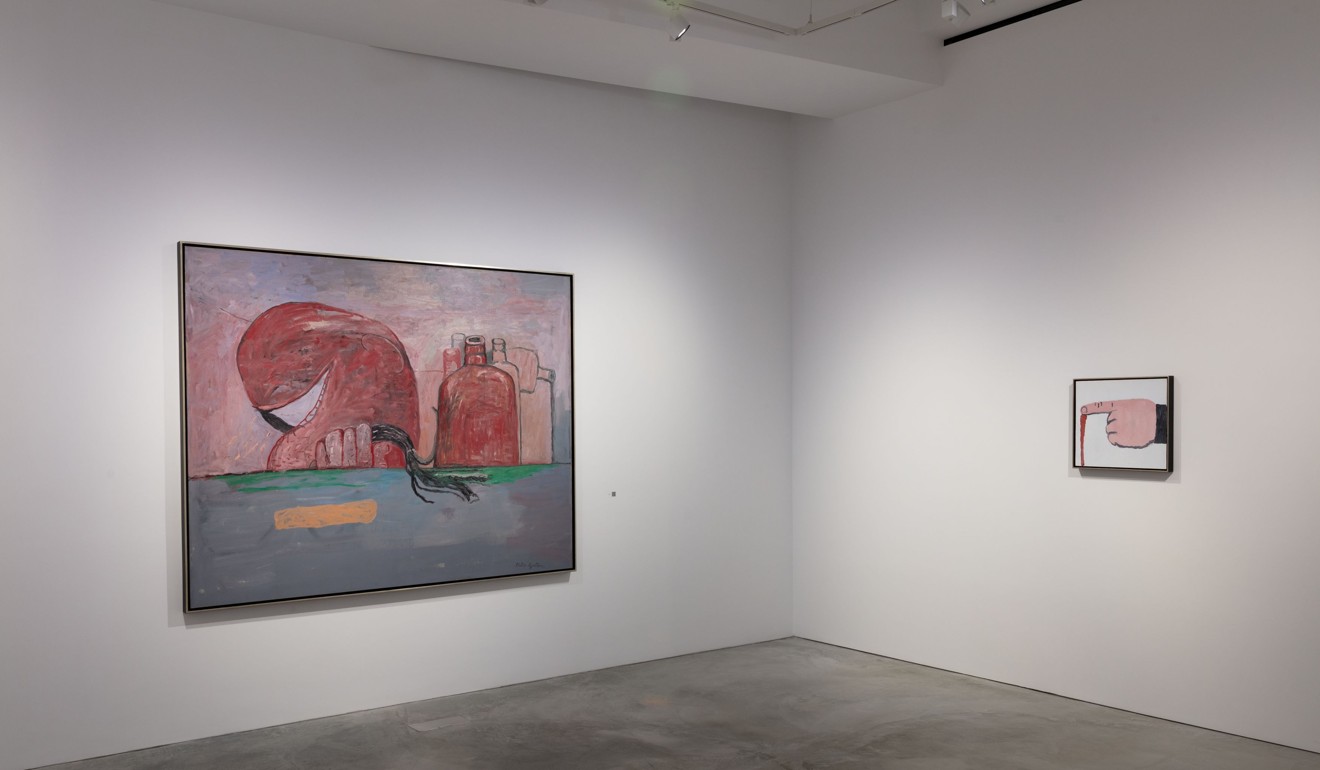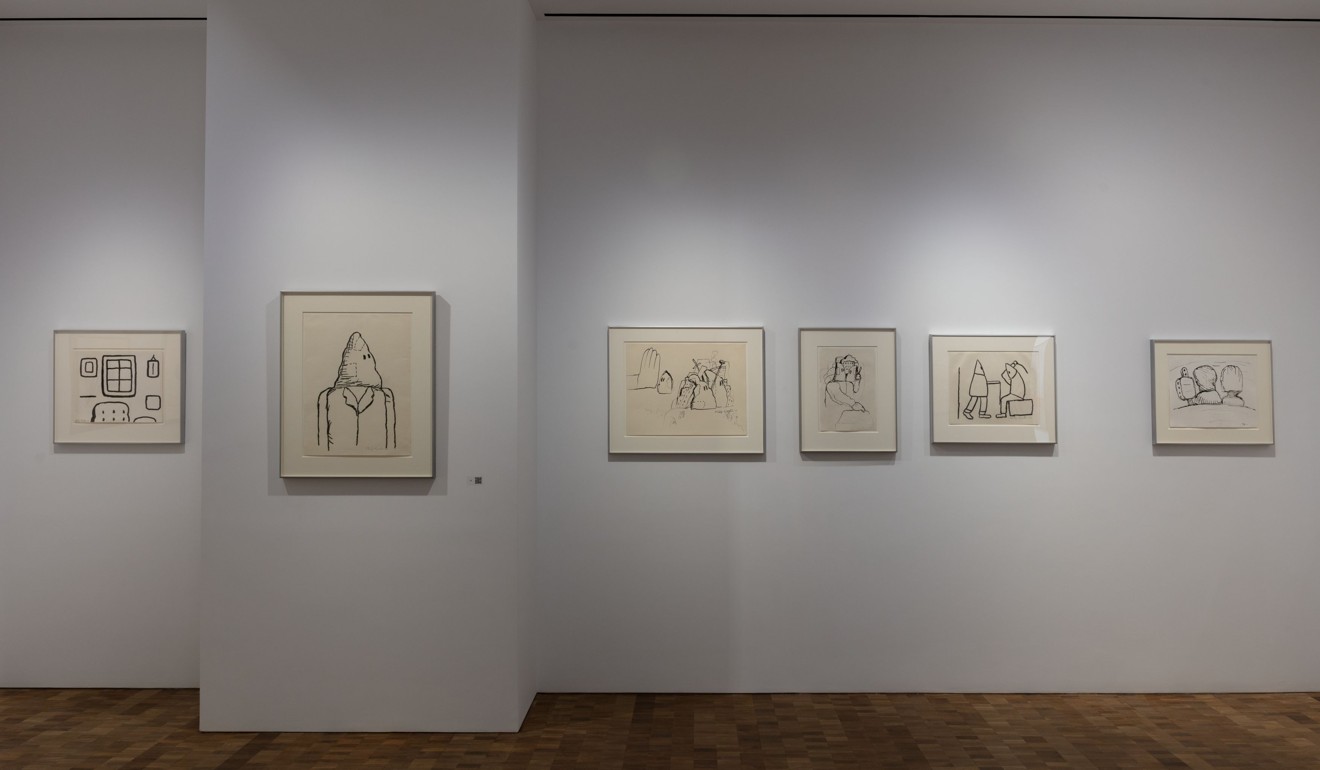
Philip Guston exhibition in Hong Kong, narrated by his daughter, looks at his abstract and figurative works
‘Philip Guston: A Painter’s Forms, 1950-1979’ looks back on three decades of the late American abstract expressionist’s career and includes an audio guide narrated by his daughter Musa Mayer
Three cartoonish blood-spattered Ku Klux Klan figures cruise down the road smoking big cigars in Riding Around (1969), one of the images that greet visitors in a new exhibition at the Hauser & Wirth art gallery in Hong Kong’s Central district.
The show, “Philip Guston: A Painter’s Forms, 1950-1979”, introduces one of the main figures of American abstract expressionism through the use of an audio guide.
New York exhibition on TCM shows US history of Chinese medicine
Narrated by Guston’s daughter Musa Mayer, who is also the curator of the exhibition, the recording takes visitors through the artist’s creative periods and the rich symbolism of his work, while offering hints of the painter’s daily life and tribulations.

As the audio explains, Riding Around belongs to a series of artworks in which Guston reckons with the violence and racial tensions that shook America during the 1960s. The chaotic events of that decade pushed the artist to abandon the abstract paintings that had helped him gain worldwide recognition.
“When the 1960s came along I was feeling split, schizophrenic … What kind of man am I, sitting at home, reading magazines, going into frustrated fury about everything – and then going into my studio to adjust a red to a blue?” said Guston, according to the guide.
I almost tried to imagine that I was living with the [Ku Klux] Klan: what would it be like to be evil, to plan, to plot?
The artist’s return to figurative painting in the mid 1960s – which includes a series of works depicting Ku Klux Klan-like characters – was fiercely rejected at the time by the artistic community, and even some of his closest friends turned their back on him.
“Art critics were merciless. How could this painter of elegant, beautiful abstractions turn to these seemingly crude, cartoonish depictions of violence?” Mayer says in the audio guide.
Meet Anne Carrère: the artist bringing Edith Piaf back to life
But Guston kept exploring human nature and his own inner demons through his creations, identifying some of his blood-stained figures as masked self-portraits.
“I almost tried to imagine that I was living with the [Ku Klux] Klan: what would it be like to be evil, to plan, to plot?” he pondered at the time.

The artist further explored his own insecurities and fears in another of his major works displayed in Hong Kong, Febrile (1976), where the artist portrayed himself as a desolate, self-flagellating figure surrounded by alcohol bottles.
Mayer describes in the audio guide “the intensity of his work during these years” with artworks “emerging from long, punishing bouts of work in the studio”.

The exhibition begins with a display of different abstract works from the 1950s, where grey figures seem to emerge from a distressing black emptiness. Some of the artists’ recurrent traits, such as his strong brush strokes and his use of pinks and greys, can already be appreciated in these works.
The show swiftly moves to his figurative works from the 1960s and ’70s. These include scenes with masked characters, still lives of mundane objects, and bizarre self-portraits where the artist depicts himself as a bean-shaped head with giant eyes.

Two more rooms host some of Guston’s final paintings, in which he reflected about mortality and the act of creation, and a series of drawings on paper.
Lihsin Tsai, senior director of the Hauser & Wirth Hong Kong gallery, explains that Mayer took care of every detail while preparing his late father’s first exhibition in Asia.
“She adjusted all the details of every single room by herself,” Tsai says.
Zeng Fanzhi’s first Hauser & Wirth solo show happening this autumn
As a complement to the exhibition in Hong Kong, a translation in traditional Chinese of Mayer’s memoirs of her father, Night Studio, has been published by Hauser & Wirth Publishers and Art & Collection Group.
Philip Guston: A Painter’s Forms, 1950-1979, Tue to Sat, 11am to 7pm, until August 25. Hauser & Wirth Hong Kong, 15-16/F, H Queen’s, 80 Queen’s Road Central.

